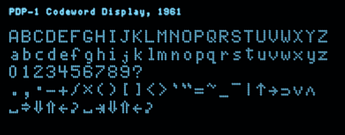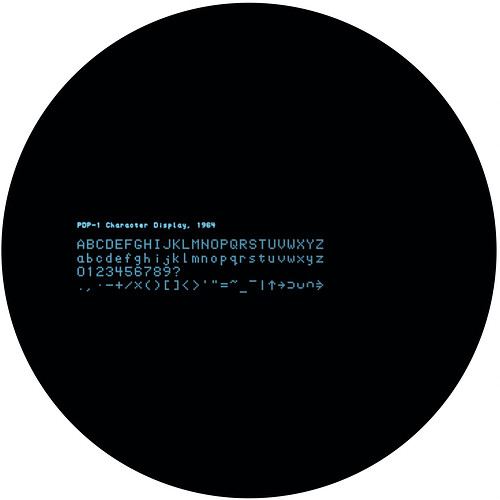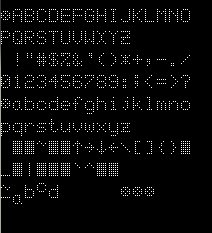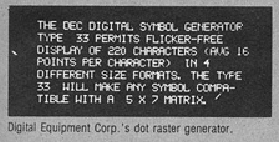I can only answer for the PDP-1:
Essentially, there are no fonts. The PDP-1 is a bare metal machine with a x/y display.
Meaning, any fonts are (originally) generated by a software renderer, dot by dot. There are actually several of these, and they rely on glyph data (two 18-bit words per character) for drawing the characters. There was also a symbol generator (Type 33), which used the same mechanism and data format (this came from memory and was thus freely configurable) as some as these font renderers, but at considerably higher speed.
All of these fonts (at least, all I know of) use a 7 lines by 5 dots matrix for the characters and may be scaled to a variable dot-pitch.
This is the earliest one I know, from 1961 for the PDP-1b production prototype at BBN:
And here is another one, from 1964:
(This one bit to encode a possible drop by 2 lines to draw lower-case letters with descenders.)
Both images are emulation screenshots (compare the splash screen here, click the tiny black button in the bottom right corner of the emulated screen for a service screen including a font sample). There are also two images of the “real thing” in the CHM catalog (probably using the Type 33 Symbol Generator, since the restored PDP-1 at the CHM has one), using similar font data (there are differences in the logical symbols) as in the second picture (once in the dark, once in room lighting):
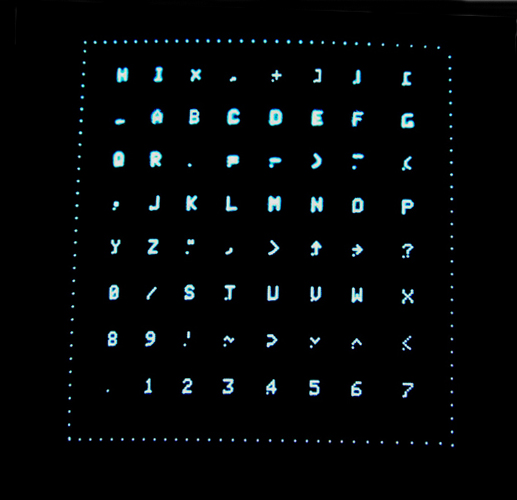
(https://www.computerhistory.org/collections/catalog/102663947)
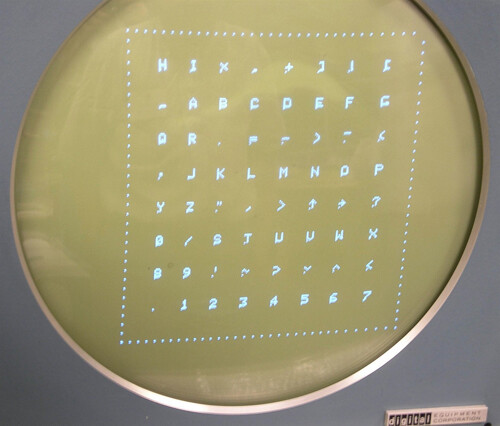
(https://www.computerhistory.org/collections/catalog/102663948)
(There’s apparently an extra dot for reference at the bottom left corner of the character matrix in those images. Or, as these photos were taken during the restoration process, this may be an artifact caused by some failure in the Type 33 Symbol Generator.)
It should be fairly easy to recreate those fonts in any font creator, even the simplest one. Mind that the font is composed of round dots, as this is an x/y point plotting display (plotting graphics by separate dots, one at a time). The resolution is 1024 x 1024 on a 9 3/8 x 9 3/8 inch display, but dots are larger than the distance between plotting locations (providing a visual resolution of roughly 512 x 512) and dot sizes vary with intensification (there are 8 levels of intensity).
(The first two images are rendered at a pitch of 2 for the small type and 4 for the character samples. But this only emulation based on what I see on photographs. The photos of the PDP-1 at CHM were probably taken with a smart phone and tend to show some bleeding artifacts due to exposure timing, capturing multiple [machine] frames at once.)
P.S.: The bar/over-stroke is used by the PDP-1 Macro assembler to designate assembler variables and should be a dead key character. For a true PDP-1 font, over-stroke variants should be available for every character.
Edit/Update: I found another one, a rendering routine “Codeword Display” found in a collection of subroutines from 1961. This one features lower and upper-case characters as well as symbols for non-printable control characters:
(This is actually my least favorite one.)
The control symbols are (last row, left to right) space, tab, to-lower-case, to-upper-case, backspace, carriage return, followed by the same in upper-case (upper-case tab is actually different from its lower-case countepart)…
Notably, each of those 3 character routines uses a unique encoding for the character data, while the broader schemes are generally similar.




